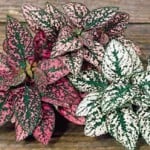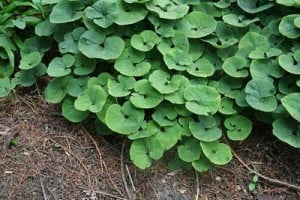
The other day I dropped by my brother’s new home and he proudly showed me the beds he had just planted with hypoestes (polka dot plant). “They’re great,” I said. “But you know they’re annuals. You’ll have to replace them next year.”
His face fell. “But at the garden center they told me they were perennials,” he said.
Well, technically, yes. In hot, tropical Madagascar, where it comes from, hypoestes is a perennial shrub. But in Chicago, where winters are colder (just a teeny bit), the plant dies at the first frost. For all intents and purposes, hypoestes is an annual in the Midwest — unless you have a greenhouse or other good houseplant habitat to shelter it during the winter.
For gardeners, there’s a lot of gray area in the definitions of “annual” and “perennial.” To a botanist, the distinction is straightforward: An annual plant completes its whole life cycle in one growing season, and a perennial plant stays alive for years, keeping its root system through the winter even if the top growth dies back.
We value some annuals, such as peppers and cucumbers, because they grow from seed to produce fruit in one summer. We value others because, in their desperate need to get pollinated and produce seeds for the next generation before winter, they bloom for months. Along with his hypoestes, my brother had planted impatiens, which is a true annual.
But here’s where it gets messy: Even if a plant is perennial, it will only live on for years in the right climate. Winter is the big factor. A lot of tropical and subtropical plants, like hypoestes, or my potted ficus tree, will do fine outdoors in the hot, humid summers of Chicago (or Minneapolis or Des Moines), but cold will kill them.
Since different plants evolved in a wide range of habitats, they have a wide range of temperature tolerances. This leads to the category we call “tender perennials” — meaning, basically, perennials that won’t survive the winter where I garden, wherever that might be. “Tender” means different things in different places; it’s an extremely relative term. So is “half-hardy,” which means a little bit hardier than “tender,” whatever that means.
One example of the concept is pelargonium (the plant commonly sold as “geranium” in garden centers). It’s a “tender perennial” grown as an annual in Chicago, mostly in containers. But in my other brother’s neighborhood in easy-winter San Francisco, it’s not a bit tender and grows all year right outside. I’ve seen good-sized pelargonium bushes.
The USDA hardiness zones that we see on every plant label are mainly about trying to sort out which perennials are too tender where. Winter hardiness is not an issue for annuals, which are done before winter anyway, leaving only their seeds behind.

For Chicago gardeners, the useful distinction is not between plants that are botanically annuals and plants that are botanically perennials, but between plants that can survive the winter outdoors and plants that can’t. Effectively, everything that can’t is an annual.
I’m taking the new gardener some Canadian wild ginger for his groundcover bed. It’s native around here, and it comes back every year in my own garden. It really is a perennial — even in Chicago.










